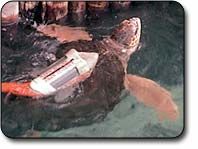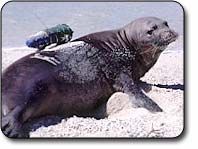Stupid Tmnet, stupid Tmnet....
I have not been able to update my blog due to the stupidness and idiocy of the internet service provider that is TMnet. Due to some screw up, my account was blocked. It has been almost a week since the last time i was able to get online. Stupid TMnet....STupid TMnet.
Anyway now that my internet service account has been restored, i can now start updating my blog again. I have so many things to write about, since it's been such a long time. A lot of topics have been piling up in my documents folder. I'm still very angry with TMnet. Arghhhhhhhh!!!
I've wanted to post something for quite sometime now, it's about an interesting scientific research tool that i saw on the National Geographic documentary channel . I wanted to do that 2 days after the african man poem, but because of the STUPID TMNET...... i couldn't do that until today.
Anyway now that my internet service account has been restored, i can now start updating my blog again. I have so many things to write about, since it's been such a long time. A lot of topics have been piling up in my documents folder. I'm still very angry with TMnet. Arghhhhhhhh!!!
I've wanted to post something for quite sometime now, it's about an interesting scientific research tool that i saw on the National Geographic documentary channel . I wanted to do that 2 days after the african man poem, but because of the STUPID TMNET...... i couldn't do that until today.
The scientific research tool i'm refering to is the National Geographic Crittercam. National Geographic's Crittercam is a research tool designed to be worn by wild animals. It combines video and audio recording with collection of environmental data such as depth, temperature, and acceleration. These compact systems allow scientists to study animal behavior without interference by a human observer.
It's quite simple really.... the crittercam is basically a camera that is designed to be attached to an animal and this camera will document the lives of these animals from their point of view. Greg Marshall, a marine biologist first conceived the idea of crittercam in 1986. Now, the crittercam has been used on live whales, sharks, seals and sea lions, sea turtles, penguins, manatees, and other marine animals. This marvellous tool has also been used on land animals on land, with the first land animal, being a wild African lion.


The first crittercam was really bulky, but Marshall and his engineering team, led by Mehdi Bakhtiari has improved the crittercam making it smaller and lighter. The camera on the turtle in the picture is the prototype crittercam and is clearly very bulky but the crittercam on the seal is smaller and more lightweight compared to the prototype. Despite the bulky nature of the prototype crittercam, the turtle didn't seem to be bothered by it.
I just thought that the crittercam is an interesting item to share. I think it is a priceless tool that benefits both biologists and other people as well. It is also useful in bringing conservation messages to worldwide television audiences. If you want to know more about Crittercam then go to http://www.nationalgeographic.com/crittercam/about.html
.jpg)
3 Comments:
Wow, i'd like to put one of those on my dog so we can see what he does when we're not at home .
Thanks for the re-visit. Sorry about your ISP. We lived in Japan back in 95 when isp's first started there. Takes a while to find a dependable server.
cheers,
Heh, that's a good idea. That's really interesting.... what do our pets do when we're not home, hmmm? The picture in your profile...is that your dog?
No, just a proto Igot from another site. That's a good idea; maybe I should find one of Joey's pics
Post a Comment
<< Home